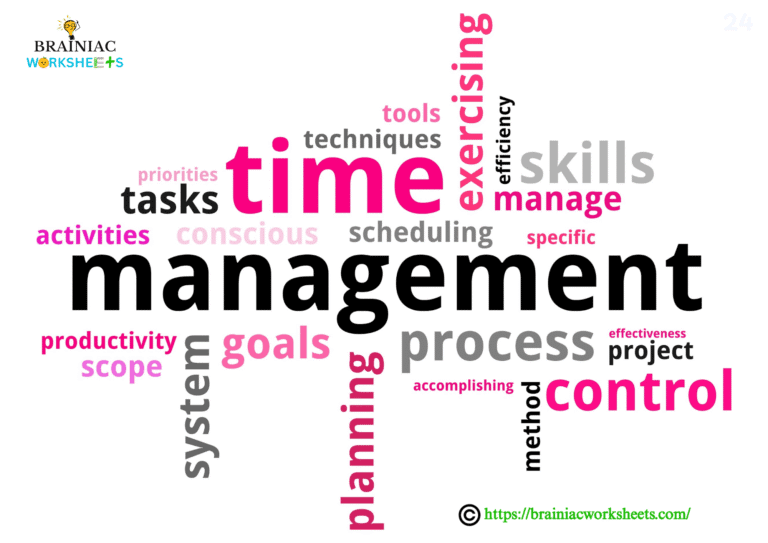Before discussing how to teach phonics step by step let’s understand the real-time scenario and what is phonics. It is normal in nearly every situation that a child first learns to speak and then write. It is often seen that kids mispronounce words, this happens when they are aware of the alphabet names but do not have a clear idea of how they sound. Here’s where phonics comes into action and connects the dots between alphabets and their sounds. Now let’s, proceed further to understand what phonics is and how to teach phonics step by step.
Research shows that children with a good grasp of phonics are proven to be long and consistent readers. They confidently explore new words and pronounce them correctly. The simple logic behind this is they know the alphabet sounds and have a clear idea about digraphs and blends.
In this blog we have simplified the process, offering you a clear, actionable, and catchy roadmap on how to teach phonics step by step. We have broken down complicated concepts into simple-to-follow steps providing practical activities to empower you with the information and resources you need to make phonics an enjoyable and rewarding experience.
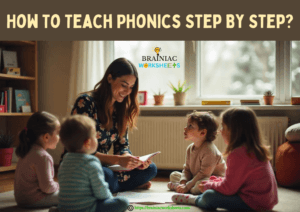
Definition and Meaning of Phonics
In simple words, phonics is the relationship between alphabets and their sounds. Each alphabet (grapheme) has its individual sounds known as phonemes. When two or more alphabets combine together, i.e., vowel + vowel, consonant + vowel, vowel + consonant, consonant + consonant, they make different types of sounds.
Phonics helps children to recognize sounds by which they can identify the sounds of words and pronounce them correctly.
According to Oxford Learner’s Dictionary, “a method of teaching people to read based on the sounds that letters represent”.
Merriam Webster states the definition of Phonics as, “a method of teaching beginners to read and pronounce words by learning the phonetic value of letters, letter groups, and especially syllables”.
Thus, when children learn phonics, they are aware of the sounds associated with letters. They also learn how those letters mix together to create new sounds. Teaching phonic sounds step by step gives a good understanding to children how words are formed and the formula or method behind their pronunciation. This makes the communication and learning of language easy.
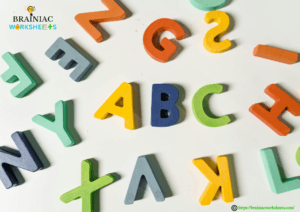
Phonics And Its Role In Reading Development
Phonics is the method of pedagogy based on connecting sounds (phonemes) with the letters or groups of letters they stand for (graphemes). It’s the connection between written and spoken form. Think of it as learning the formula of reading. Its most important contribution to reading progress is that it enables children to read words for themselves. Instead of memorizing word after word, they are able to break up unfamiliar words into individual sounds, so that they can read and comprehend a much wider variety of texts. Unless they have a sound basis in phonics, children struggle with fluency and comprehension, and this puts back their general reading development.

Phonemic Awareness Vs Phonics
Before teaching phonics step by step, it’s important to understand the distinction between phonemic awareness and phonics, and why both are essential for reading growth.
1. Defining the Difference and Why Both Matter
Phonemic Awareness:
This is the ability to perceive, identify, and manipulate the unique sounds (phonemes) of spoken words. It is a listening skill.
- It relates to the awareness that words spoken out loud consist of distinct sounds.
- It doesn’t involve the use of letters or written words. It’s sounds-based.
- Why it matters: Phonemic awareness is the first step towards phonics. Without it, children face problems understanding that words can be broken down into separate sounds, making it hard to connect those sounds to the alphabets.
Phonemic Awareness Examples:
Segmenting:
Ask: “What are the sounds in ‘bat’?”
Children say: “/b/ /a/ /t/”.
Blending:
You say: “/j/ /u/ /g/”.
The child says: “jug.”
Rhyming:
Ask Them: “What rhymes with ‘can’?
Children respond: “fan,” “pan,” “man.”
Initial Sound Identification:
Ask: “What is the beginning sound of ‘red’?”
The child responds: “/r/”.
Phonics:
It is a matter of relating those individual sounds (phonemes) to the letters or letter groups (graphemes) that spell them out.
- It comprehends the correspondence between sounds and written symbols.
- It requires both auditory and visual skills.
- Why it’s necessary: Phonics is the code of reading. It enables children to decode (sound out) printed or written words so they can read on their own.
Phonics Examples:
Seeing the letters “j-a-m” and knowing that the /j/ sound, the /a/ sound, and the /m/ sound blend together to make the word “jam.”
- Knowing that the letters “ch” make the /ch/ sound, as in “chin.”
- Knowing that the letter “a” can make the short /a/ sound as in “map”, or the long /a/ sound as in “game”.
- Knowing that the letters “ai” combine to make the long /a/ sound as in “rain”.
Why Both Are Necessary:
- Phonemic awareness sets children up to know the sound structure of language, but phonics shows them how to connect those sounds to printed letters.
- Consider phonemic awareness to be the learning of the sounds of the instruments in an orchestra, and phonics to be the reading of the sheet music that informs you how to play them. You require both to create music.
- Without phonemic awareness, teaching phonics will be significantly more difficult even using step by step method, and without phonics, phonemic awareness can’t provide the child with the skill to read written words.
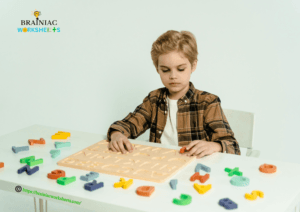
When to start teaching phonics
1. Age-Appropriate Guidelines
Preschool (Ages 3-4):
- This is the crucial time to develop their listening skill so focus mainly on phonemic awareness activities.
- Introduce alphabet sounds through games involving phonic sounds, reading alphabet books, and singing alphabet songs.
- Assign a gesture with each phonic sound.
- Keep it fun and joyful! Don’t introduce formal phonics teaching at this point.
Kindergarten (Ages 5-6):
- This is when formal step by step phonics teaching usually starts.
- Always begin with short vowel sounds and common consonants.
- Introduce CVC words such as ‘mug’, ‘cat’, ‘bun’, etc.
- Merge phonics activities with phonemic awareness for a joyful learning experience.
First Grade (Ages 6-7):
- Expand the sphere and strengthen the base of phonics.
- Introduce the basic concepts of digraphs, blends, and diphthongs gradually step by step using plenty of examples. Remember one concept at a time
- Emphasize developing reading fluency and understanding the concepts clearly.
Second Grade (Age 7-8):
- Sharpen and polish the phonics skills and find if there are any remaining gaps to be filled.
- Introduce more intricate phonics patterns and multi-syllable terms.
- Shift to independent reading where they will explore unfamiliar words.
Key Note: These are general guidelines. Every child develops at their own pace.
2. Signs of Readiness
Instead of relying solely on age, look for these signs of readiness:
Interest in Letters and Sounds:
- Does your child show curiosity about letters, words, and sounds?
- Do they enjoy listening to stories and rhymes?
Phonemic Awareness Skills:
- Can your child identify rhyming words?
- Can they segment and blend simple sounds?
- Can they identify the beginning and ending sounds of words?
Attention Span:
- Can your child focus on short, structured activities?
- Can they follow simple instructions?
Fine Motor Skills:
- Can your child hold a crayon or pencil properly?
- Can they trace or write simple letters?
Vocabulary:
- Does the child have a good base of spoken vocabulary?
Ability to separate sounds:
Can they hear the difference between similar sounds?
If your child exhibits these signs, they are likely ready to begin formal phonics instruction. If not, focus on building phonemic awareness and creating a love of reading.
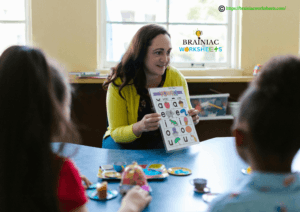
Benefits Of Step By Step Approach
A systematic, step by step teaching of phonics isn’t necessarily about sticking to a strict agenda; it’s about laying solid foundations, sound by sound. Imagine building a house: would you begin with the roof or the base? Here’s why this method is so effective:
1. Clarity and Confidence:
- It creates a clear pathway for both teacher and child, avoiding confusion and increasing confidence.
- Each step rests on the foundations of the preceding one so that concepts are mastered before progressing.
2. Enhanced Retention:
- Repetition of learning systematically fortifies the understanding.
- Children will have better chances to retain phonics ideas if these are shown in a coherent pattern.
- Mastering each step children learn how to decode words on their own, developing a sense of confidence.
- They are provided with the resources to correct themselves and address reading problems.
3. Personalized Learning:
- Step-by-step scaffolding permits adaptability and modification to individual learning paces and styles.
- It becomes easier to identify and deal with certain areas where a child might be having problems.

How To Teach Phonics Step By Step
When you begin to teach phonics, don’t think that bookish knowledge and practice of conversation will be sufficient. Teaching phonics is a step by step approach that starts with phonemic awareness, followed by teaching letters and the sounds they represent, followed by blending 2 or more sounds to make a word, then reading and writing with phonics, focusing on digraphs and blends for more extensive vocabulary. You need to approach in a step-by-step manner and incorporate a range of activities in every step. Let’s understand this detail.
1. Build Phonemic Awareness:
Pay attention to sounds: Assist children to hear and play with the sounds in conversation, realizing that words consist of separate sounds.
Activities
- Rhyming: Play rhyming memory games, such as “fat, rat, hat” and the series continues. Then ask them what rhymes with the word sun or fan and continue the game in this way.
- Segmenting: Break spoken words into distinct sounds. For instance, “hat” is /h/ /a/ /t/. Begin with easy CVC (consonant-vowel-consonant) words.
- Blending: Merge separate sounds to create a word, preferably a CVC word. For e.g., pronounce, “/s/ /u/ /n/” and ask them, “What word is that?”.
- Identifying Beginning and Ending Sounds: Ask, “What sound does ‘pig’ begin with?”, “What sound does ‘man’ ends with?”.
- Playing with Sounds: Play a game in which you alter sounds in words. For example, “Alter the /c/ in ‘cat’ to /b/. What word do you now have?” (bat).
- Why it is important: Phonemic awareness allows children to realize that words are composed of separate sounds, and it is the foundation of phonics.
2. Introduce Letter Sounds (Phonemes):
Start teaching with the most common and easily differentiable sounds: /a/, /e/, /i/, /o/, /u/ (short vowel sounds) and common consonants such as /s/, /t/, /p/, /n/, /m/.
- Step-by-step approach: Start by introducing one letter at a time concentrating on their sounds (phonemes), rather than names at first.
- Learning aids: Use flashcards, alphabet charts, phonics worksheets, and other visuals (like cutouts) to link letters (graphemes) to sounds (phonemes). For instance, ‘f’ with an image of a fan.
- Association: Connect the sounds to tangible objects, such as “s” for “sun.”
Emphasize on Clear Pronunciation: Utter the sounds clearly. Don’t add extra sounds (e.g., don’t say “puh” for /p/, say /p/ or “muh” for /m/ say /m/).
Multi-Sensory Learning: Add touch and movement with sounds. Ask your child to trace letters in sand or create letters with play dough. Sing alphabet songs that teach the sounds of letters or solve alphabet puzzles.
3. Combining Sounds to Form Words:
Instruct how to Combine Separate Sounds to form words:
- Begin with basic CVC words (e.g., bat, van, zip).
- Demonstrate the process of blending: read each sound separately and slowly, rather than pronouncing rapidly.
Sound Blending Techniques:
- Break-Blend-Stretch: Slowly separate the sounds of a word: /r-a-t/. Next, start blending at a slower pace and gradually increase the speed. Encourage children to repeat after you. Give them new words and ask them to say the phonemes and then blend them to form the word.
- Sound Buttons: Create dot buttons beneath each letter of a CVC word. When you say each sound, “touch” the dot button. You use different colors to highlight them.
- Elkonin Boxes: Create boxes for each sound of a word. Say the word, and then have your child put a token in each box as they say each sound.
Consistent Practice:
- Practice blending sounds regularly, starting with simple words and gradually increasing complexity.
4. Emphasis on Digraphs and Blends:
Teach Common Digraphs and Blends:
- Digraphs: Two letters combine to make a new and single sound (e.g., sh, ch, th, ph).
- Blends: Two or three consonants blend together to form a sound where each sound remains distinguishable (e.g., st, bl, cr, sp).
- Clarify that the combination of letters produces distinct sounds.
Practice Using Words With These Sounds:
- Practice word lists and sentences with digraphs and blends.
- Play “digraph bingo” or “blend matching.”
- Build on prior knowledge: Add digraphs (two letters making one sound) such as “sh”, “th”, and blends (two or more consonants with one sound) such as “bl”, “br”.
- Practice words: Practice with words that have these patterns to build word recognition and fluency.
5. Long Vowel Sounds and Vowel Teams
Introduce the Concept of Long Vowels:
- Long vowels say their names (e.g., long ‘a’ pronounces /ay/ as in pay, day, long ‘e’ pronounces /ee/ as in see, key).
- Explain diphthongs (e.g., ai, ee, oo, oa)
- Explain silent ‘e’ patterns (e.g., cake, note, bike, rope, hide).
Offer Examples and Practice:
- Employ word sorts to sort words with varied vowel patterns.
- Use books emphasizing long vowel sounds.
- Discuss the popular dictum “When two vowels go walking, the first one does the talking” as a memory tool for assisting in vowel teams.
6. Multi-Syllable Words
Instruction for Syllable Division:
- Inform the child that long words are comprised of syllables.
- Instruct popular syllable division rules (i.e., between two consonants).
- Clap out syllables in words.
How to Sound Out Longer Words:
- Ask your child to sound out multi-syllable words in parts.
- Practice reading words that have prefixes and suffixes.
- Use visual indicators to demonstrate syllable breaks.
7. Implement Phonics in Reading and Writing
- Reading brief, decodable books: Create chances for kids to apply what they know to read words and sentences.
- Practice writing: Have them practice writing words and basic sentences based on what they’re studying about sounds and patterns.
8. Ongoing Building of Vocabulary and Fluency
- Sight word introduction: In addition to phonics, introduce common sight words (words that cannot be sounded out) gradually.
- Reading repetition: Read and re-read books, emphasizing accuracy, pace, and expression.
Reinforcement and Practice
- Daily consistent practice: 15-20 minutes a day is better than long, occasional practice.
- Fun approach: Incorporate games, activities, and everyday examples.
- Read together aloud: Highlight phonics patterns in books.
- Positive reinforcement: Praise and reward effort, celebrate successes.
- Regular revision: Revise previously learned topics to secure mastery.

Engaging Activities and Resources
A. Phonics Games and Activities: Making Learning Fun
Sound Matching:
- Prepare cards with pictures and the respective letter sounds.
- Ask children to match the pictures with the appropriate sounds on worksheets.
- Example: An apple picture matched with the ‘a’ card.
Word Building:
- Use letter tiles or blocks to build simple words.
- Start with CVC words and gradually introduce more complex words.
- Example: Use tiles to spell “cat,” “dog,” “sun.”
Phonics Bingo:
- Create bingo cards with letter sounds or words.
- Call out sounds or words, and ask kids to mark them on their cards.
- A wonderful group activity that supports sound identification.
“I Spy” Phonics:
- Play “I spy” with phonics sounds. “I spy something beginning with /c.”.
- Anywhere, play this, which reinforces early identification of sounds.
Sorting Sounds:
- Provide the child with a set of pictures, and let them sort pictures according to the starting sound. Eg: Sort photographs that begin with /f/ and /l/.
- Appreciate achievements and use positive reinforcement.
- Make activities brief and stimulating.
- Utilize colorful, visually stimulating materials.
- Make use of movement and hands-on activities.
- Make sure that learning should be a joyful experience, not a burden.
B. Recommended Resources:
Phonics Worksheets and Workbooks:
- Use worksheets and workbooks that have a systematic phonics curriculum.
- Make sure the resources are suitable for your child’s age and learning level.
- Examples: There are websites such as Brainiac Worksheets that provide a variety of phonics activity worksheets and workbooks from classes Lkg to class 5.
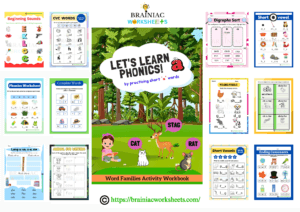
Download FREE PDF Phonics worksheets and workbooks for kids.
Online Phonics Games and Websites:
- Free or subscription-based phonics games can be found on many websites.
- Select websites that include easy-to-understand instructions and interactive visuals.
- Seek out websites with progress tracking and customized learning.
- Examples: websites providing printable worksheets, or interactive games with sounds.
Books That Are Appropriate for Early Readers:
- Select books containing simple, repeated text and good illustrations.
- Find books with an emphasis on certain phonics patterns.
- Begin with decodable readers which contain only sounds your child knows.
- Examples: “Bob Books“, or books which contain a lot of CVC words.

How To Teach Phonics Challenges And Support
A. Common Difficulties & Identification
Resolving Problems with Blending, Sound Identification, etc.
1. Phonemic Awareness (Sound Identification):
- Struggling to differentiate similar sounds (for example, /b/ & /p/, /d/ & /t/).
- Failing to segment words into distinct sounds.
Fixes:
- Exercise auditory distinguishing skills (for instance, “Do these words start with the same sound?”).
- Use manipulatives like sound boxes or counters to represent individual sounds.
- Complete rhyming and alliteration activities.
2. Blending:
- Difficulty or reluctance to blend individual sounds smoothly together to form words.
- “Choppy” or disrupted blending.
Solutions:
- Start with simple CVC words.
- Use visual support like sound slides or blending lines.
- Practice “saying it slow” and then “saying it fast.”
- Use the use of Elkonin boxes.
3. Sound-Symbol Correspondence
- Trouble mapping the letters to their corresponding sounds.
- b/d, p/q, and t/f confusions.
Solutions:
- Employ multisensory techniques (e.g., tracing letters while pronouncing the sound).
- Introduce sounds and letters in an orderly and cumulative manner.
- Utilize flashcards and letter-sound activities.
4. Decoding Multisyllabic Words
- Difficulty in dividing longer words into bite-sized pieces.
- Skipping or reading through syllables.
Solutions:
- Teaching on kinds of syllables and syllable division rules.
- Practice dividing words into chunks, or syllables.
- Syllable markers to identify syllables.
B. Strategies for Struggling Students
Patience and Positive Reinforcement:
- Create an encouraging and nurturing learning environment.
- Focus on small success and effort.
- Refrain from criticism or pressure.
- Embrace a growth mindset.
- Breaking Lessons into Bite-Sized Steps:
- Present concepts step-by-step and systematically.
- Single-track one skill at a time.
- Offer frequent practice and review opportunities.
- Implement multisensory instruction.
- Seeking Additional Assistance if Necessary:
- Talk to a reading specialist or school psychologist.
- Investigate specialized phonics programs or interventions.
- Consider tutoring or small-group instruction.
- Discuss with the child’s teacher.
C. Monitoring Progress
Developing a Simple Progress Chart:
- Keep a chart to monitor particular phonics skills (e.g., recognition of sounds, blending, decoding).
- Monitor progress with check-marks, stickers, or ratings.
- Leave room for notes and observations.
- Make the chart catchy and interactive.
- Monitor acquiring sight words.
- Celebrating Milestones:
- Celebrate and acknowledge each step of progress.
- Use positive reinforcement and rewards.
- Share progress with parents and guardians.
- Make learning fun and joyful.

Conclusion
In conclusion, the answer to how to teach phonics step by step lies in the following these steps: starting with sound identification and going through blending, sound-symbol correspondence, and multi-syllable word decoding. Detection of learning issues early on is important so targeted interventions can be put in place. At each point along the way, never forget that your best resources are consistency and patience. Creating a comfortable, nurturing atmosphere, dividing lessons into manageable chunks, and rewarding every success will create a passion for reading.
Keep in mind that all children learn at their own pace, and it’s your commitment that matters so much. Never let setbacks discourage you but rather consider them as a chance to solidify learning. Provided that you tackle it with positivity and patience, you can empower kids to open the door to the world of reading. Hold this guide in your hand, tighten your grip, and begin teaching phonics today. You can be capable of igniting an enduring love of literacy!
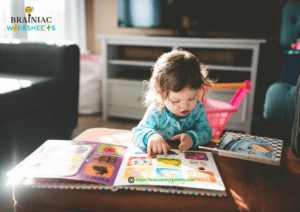
Frequently Asked Questions (FAQs)
Q: How do I start teaching phonics?
A: You can start teaching phonics following these simple steps in the correct order.
1. Phonemic Awareness: Practice saying sounds (not letters) using rhyming, segmenting, and blending.
2. Alphabet Sounds: Teach common letter sounds systematically (e.g., s, a, t, p, i, n).
3. Blending: Practice combining sounds to make simple words (CVC words).
4. Digraphs/Blends: Teach letter combinations such as “sh” and “bl”.
5. Vowel Sounds: Explain short and long vowel sounds and r-controlled vowels.
6. Word Families: Practice identifying word patterns (e.g., -at, -an).
7. Reading/Writing: Use phonics skills in reading and writing.
Q: What is the best method to teach phonics?
A: The most successful phonics teaching is systematic and direct, starting with phonemic awareness exercises to establish the skill of manipulating single sounds. Then move into letter-sound correspondence in an orderly way, commencing with basic consonant-vowel-consonant (CVC) words and then progressing to more complicated patterns such as digraphs, blends, and vowel teams. Key elements are explicit blending and segmenting practice, whereby students learn to blend sounds together to read words and segment words into their component sounds to spell. Multi-sensory strategies, which include visual, auditory, and kinesthetic aspects, maximize learning and retention. Ongoing practice, active learning activities, and differentiated support are also key to mastery, enabling all learners to acquire strong decoding skills.
Q: How many levels are in phonics?
A: The number of “levels” in phonics teaching isn’t necessarily formalized, but more a progression through more and more complicated phonics ideas. Usually, phonics teaching progresses from simple phonemic awareness and letter-sound associations (Level 1) to short vowel sounds and CVC words and then continues through consonant blends and digraphs (Level 2), followed by long vowel sounds, vowel teams, and r-controlled vowels (Level 3). These higher levels consist of intricate consonant patterns, words with more than one syllable, and more sophisticated phonics (Level 4 and above). So, no number at all, phonics is normally designed to sequentially, layer on top of one another, foundational skills building up, but as the student progresses, accommodating increased reading capacity.
Q: What are common phonics rules, and how do I explain them?
A: Here are some common phonics rules which will help you to teach step by step:
- Short Vowel Sounds:
“When a vowel is in the middle of a short word, it usually says its short sound.” (e.g., cat, dog, bed). - Long Vowel Sounds (Silent E):
“When there’s an ‘e’ at the end of a word, it’s usually silent and makes the vowel say its name.” (e.g., cake, hope, fine). - Consonant Blends:
“Two or three consonants together where each sound is heard.” (e.g., bl in blue, str in street). - Consonant Digraphs:
“Two consonants together that sound like one new sound.” (e.g., sh in ship, ch in chip). - Vowel Teams:
“Two vowels together that sound like one.” (e.g., as in rain, oa as in boat). - R-Controlled Vowels:
“When ‘r’ comes after a vowel, it changes the vowel sound.” (e.g., car, her, bird). - The “C” Rule:
“C says /s/ before e, i, or y (cent, city, cycle), and /k/ before other letters (cat, cot, cup).” - The “G” Rule:
“G pronounces /j/ before e, i, or y (gem, giant, gym), and /g/ before other letters (go, gate, gum).”
When teaching phonics rules step by step, it’s essential to be clear, and brief, and use simple language that children can easily understand. Use visual materials such as letter cutouts, flashcards, or alphabet charts to show the rule being applied, and give lots of examples. Get the children involved by reading the words out loud and highlighting the rules in operation. Highlight that these are general rules, not rigid laws, and that there are exceptions to some words. Regular practice is the key to developing reading fluency.
Q: Where to get phonics worksheets for beginners?
A: Websites like Brainiac Worksheets offer FREE PDF educational resources on phonics which you can use as one of the primary resources to build the foundation of phonics.
I hope this article was helpful. Comment below and let us know if you have any queries.
Thank You,
Simran Mondal.



